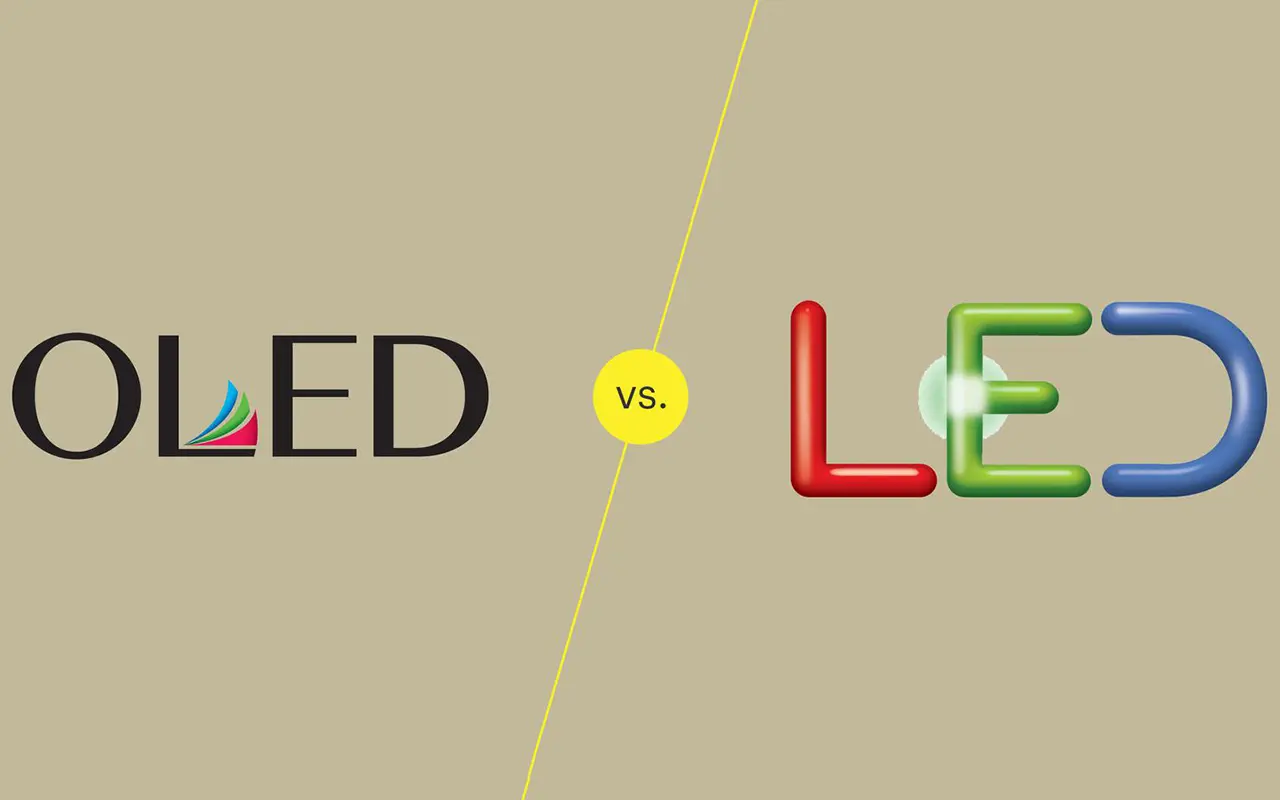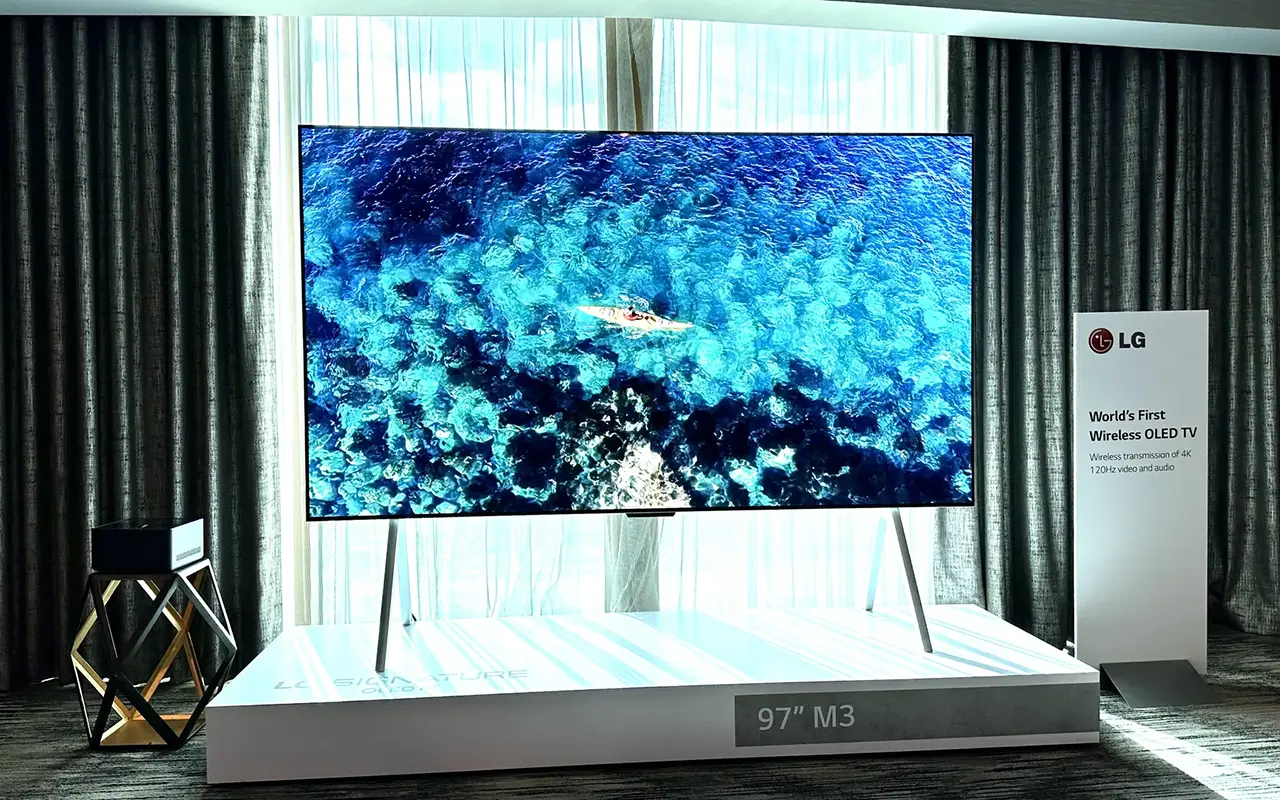Choosing between LEDs and OLEDs is crucial, as navigating lighting and display technology is now more complex. To fully enjoy your home lighting, car headlights, and new TV, it’s crucial to understand these technologies.
This guide explains LEDs and OLEDs and why they are important for consumers. It will also cover the differences between the two.
Understanding the Basics
What is LED?
An LED, or Light Emitting Diode, is fundamentally a semiconductor light source. When an electric current flows through a semiconductor, it creates light through electroluminescence. Traditional incandescent light bulbs work by heating a filament. However, this is very different. LEDs have many benefits. They last up to 25,000 hours or more and use less energy. The reason for their wide use is that they require less energy and last a long time.
What is OLED?
OLED is a newer technology called Organic Light Emitting Diode. It is transformative. Unlike traditional LEDs, OLEDs use organic materials, like carbon, to create light. Electricity creates light by using organic compounds between two conductors. OLED technology can create deep blacks and vivid, lifelike colors. OLED displays have pixels that light up separately. This makes the screen brighter and enhances color contrast.
A Journey Through Time
Historical Perspective of LEDs
LEDs were first experimented with in the 1900s. They went through many changes before becoming more solid in the late 1960s. Nick Holonyak Jr., known as the “Father of the LED,” made the first useful colored LED in 1962. LEDs have improved a lot, with more colors and brightness. Small indicator lights in electronic devices have become a versatile technology. They have revolutionized lighting and displays in different industries.
The Rise of OLEDs
The evolution of OLED technology is also a tale of innovation and ambition. OLED research started in the 1950s. In the 1980s, Kodak made a practical OLED device. This made OLED technology commercially viable. Today, OLEDs are mainly used in high-end TVs and smartphone displays. They offer excellent image quality and energy efficiency. OLEDs are different from LEDs. They can make screens that bend and are see-through. This pushes the limits of display technology.
Working Principle of LED & OLED
How Do LEDs Work?
LEDs function on the principle of electroluminescence, a phenomenon that occurs in semiconductors. A semiconductor has two layers: one with more electrons and one with fewer electrons. Electrons from the N-layer fill the “holes” in the P-layer when a current flows through the diode. This union of electrons and holes releases energy from photons, creating light. The color of the light depends on the type of material used in LEDs, creating different hues. LEDs are efficient and produce less heat than incandescent or fluorescent lights.
How Do OLEDs Work?
OLEDs use organic compounds to make light, not like LEDs that need a crystal. An OLED is made up of organic layers placed between an anode and a cathode, on a substrate. When a voltage is applied to the OLED, electrons move from the cathode to the anode and fill the electron holes. As they move through the organic layers, these electrons release energy in the form of light. Organic materials are used to make thinner, lighter, and more flexible designs. This allows for foldable displays and transparent screens.
Pour & Cons Side by Side
Advantages of LED Lights
LEDs are very efficient and use 80% less power than traditional lights. LEDs can last up to 50,000 hours, which makes them cost-effective because of their longevity. LEDs are very versatile. LED lights are versatile. LED lights are flexible and can be used for many things, such as lighting, car lights, and signs. Their robustness and ability to withstand extreme temperatures further bolster their versatile applications.
Disadvantages of LED Lights
Despite the many benefits, LEDs do have shortcomings. Premium models with advanced features, like color-changing capabilities, may have high initial costs. Users believe that LEDs should have more vibrant colors, including reds and yellows. The LED setups may flicker or have uneven brightness. This can happen due to poor drivers or incompatible dimming systems.
Advantages of OLED Lights
The OLED technology shines when it comes to color reproduction and contrast. It can display true blacks because each pixel is individually lit and can be turned on or off. This attribute also allows for extreme viewing angles without losing color accuracy. OLEDs are made of lightweight plastic, which makes them flexible and less likely to break. OLEDs have special features. They are used in bendable phones and rollable TVs.
Disadvantages of OLED Lights
OLEDs are not without their pitfalls. CFLs cost more to make than LEDs, so regular people can’t afford them. OLEDs with organic materials degrade faster, especially the blue colors. This means they may need to be recalibrated or replaced more often. This affects their cost-effectiveness over time. OLED displays can get image retention or “burn-in” because each pixel emits light.
Energy Efficiency: LED vs. OLED
The Energy Efficiency of LEDs
When it comes to energy efficiency, LEDs are the undisputed champions. LED lights are very efficient, converting over 50% of electrical energy into light. They also minimize wasteful heat dissipation, unlike any other lights. This makes them an eco-friendly choice, lowering carbon footprints and electricity bills alike. Efficient conversion is crucial for solar lighting because every watt counts. LEDs are usually better than OLEDs for long-term sustainability and operational costs.
OLED’s Energy Profile
OLEDs, while not as energy-efficient as LEDs, have their own set of advantages. One significant upside is their ability to conserve energy when displaying darker images. OLED pixels can turn off on their own, no backlighting needed like LED-backlit screens. You can save energy by controlling the light when watching movies or using “dark mode.”
Quality & Comparaison des performances
Picture Quality in LEDs and OLEDs
OLEDs are often hailed for their outstanding picture quality. Each pixel emits its own light, resulting in deeper blacks and more vivid, accurate colors. This is especially helpful in things like professional photography monitors and high-end TVs. Color accuracy is very important in those cases. LEDs use a mechanism called LCD shutter with backlighting to produce colors. LEDs have better color accuracy now, but they don’t have the vivid colors or true blacks of OLEDs.
Lifespan and Durability
LEDs are the marathon runners in the lifespan category, often lasting up to 50,000 hours. These strong lights are durable because they are made with inorganic materials. They are perfect for streetlights and industrial settings. OLEDs are advanced, but their lifespan is shorter because of organic components. Static images can permanently discolor pixels, called “burn-in,” reducing their lifespan. OLEDs might look better, but LEDs last longer and are more durable.
Real-Life Applications
Where You’ll Find LEDs
LEDs are the ubiquitous workhorses of modern lighting and display technology. They illuminate our streets and highways as energy-efficient streetlights. LEDs are important for car headlights. They make the light more accurate and safer. They control the TV market by offering inexpensive TVs that are of good quality. LEDs are used in agriculture too. They help plants grow better in indoor farms. This versatile technology extends to medical applications, aiding skin treatments and surgeries.
Where OLEDs Shine
Regarding a superior viewing experience, OLEDs are often the go-to technology. High-end TVs and smartphones use them as the best because they show rich colors and deep blacks. OLEDs are being used in architectural lighting, adding flexible and design-friendly options. They can be integrated into a building’s structure for both beauty and practicality. OLEDs have important benefits in places like airplane cockpits and medical displays. They make things easier to see and reduce eye strain.
Future Outlook: Which One Has a Brighter Future?
OLEDs are becoming more popular for high-quality displays in specialized applications. However, wait to write off LEDs. They continue to be the backbone of general lighting applications. They will continue to dominate industrial lighting and automotive applications for many years. OLEDs and LEDs keep getting better. OLEDs last longer and LEDs have better colors.
FAQs: LEDs vs. OLEDs
Is OLED Superior to LED Technology?
The question of OLED vs. LED supremacy is highly contextual. OLEDs have really dark blacks and show a wide range of colors, making the picture look amazing. OLEDs are pricier and less sturdy than LEDs. LEDs can be used in many applications like traffic signals and medical devices. If you want the best visual experience and don’t mind spending more money, OLEDs are for you. LEDs win hands down if it’s about value for money, energy efficiency, and longevity.
What’s the Typical Lifespan of OLEDs Compared to LEDs?
OLEDs usually last around 14,000 hours, considerably less than LEDs, and can go up to 50,000 or more. OLEDs degrade faster because of their organic materials, especially the blue pixels. However, you may only notice this difference at home if you keep your OLED device on all the time.
Les OLED sont-elles respectueuses de l'environnement ?
Les OLED ont en effet une empreinte carbone moins importante que les LED conventionnelles. En effet, la technologie OLED permet d'éteindre individuellement les pixels. Lorsqu'il affiche des images sombres, un écran OLED consomme moins d'énergie qu'un écran LED doté d'un rétroéclairage. Les OLED sont bonnes pour l'environnement parce qu'elles utilisent un éclairage par pixel qui économise l'énergie.
Les diodes électroluminescentes sont-elles vraiment si polyvalentes ?
La polyvalence des LED est inégalée. Les LED sont utilisées de différentes manières, comme les phares de voiture, les lampadaires, et même pour la lumière du soleil des plantes. Les LED sont utilisées dans de nombreuses industries et par les consommateurs parce qu'elles sont adaptables et solides.
Les écrans OLED peuvent-ils souffrir de "burn-in" ?
Les écrans OLED peuvent présenter un phénomène de "burn-in", c'est-à-dire que les images statiques ne s'effacent pas et restent visibles. Ce phénomène est dû à la dégradation inégale des matériaux organiques qui composent les pixels. Les LED, qui utilisent des matériaux inorganiques, n'ont pas ce problème. Elles constituent donc un meilleur choix pour les écrans qui affichent des images fixes pendant une longue période.
Pourquoi les OLED sont-elles si chères ?
Les OLED sont plus chers car ils utilisent des matériaux coûteux et un processus complexe. Les écrans OLED offrent la meilleure qualité d'image, ce qui en fait un produit phare sur le marché.
Quelle est l'efficacité énergétique des LED ?
Les LED sont très efficaces. Elles convertissent plus de 50% d'énergie électrique en lumière. Les technologies plus anciennes, telles que les ampoules à incandescence, ne peuvent convertir que 5% d'énergie en lumière. Il s'agit d'une amélioration considérable. Le reste est gaspillé sous forme de chaleur.
Les OLED fonctionnent-elles bien dans des environnements lumineux ?
Les OLED offrent de meilleurs angles de vision et des noirs plus profonds, mais peinent à s'adapter aux environnements lumineux. La luminosité de l'écran est généralement inférieure à celle des LED. Les LED offrent une meilleure visibilité si vous prévoyez d'utiliser votre écran dans une pièce bien éclairée.
Les LED sont-elles bonnes pour les yeux ?
Les lumières LED sont sans danger pour les yeux. Les modèles les plus récents sont dotés d'une technologie anti-scintillement et de filtres de lumière bleue. Cependant, si vous regardez une grande quantité de lumière bleue provenant de LED pendant une longue période, cela peut poser un problème. Il est donc conseillé de faire des pauses fréquentes.
Quel est l'avenir des technologies LED et OLED ?
Ces deux technologies sont en constante évolution. Les experts s'attendent à ce que les OLED aient des applications plus spécialisées qui nécessitent des écrans de haute qualité. Dans le même temps, les LED s'efforcent de devenir plus efficaces sur le plan énergétique et plus durables. Au fur et à mesure des recherches, ces technologies collaboreront au lieu de se concurrencer.
Conclusion & Verdict
Les diodes électroluminescentes (DEL) et les diodes électroluminescentes (OLED) sont aujourd'hui essentielles dans le domaine en pleine évolution des technologies d'affichage et d'éclairage. Les LED sont durables, économes en énergie et polyvalentes, ce qui les rend idéales pour de nombreuses utilisations. Les OLED sont plus chères, mais elles offrent une qualité de couleur et d'image imbattable. Elles constituent donc le premier choix pour les personnes qui souhaitent obtenir les meilleurs résultats visuels. Au moment de faire votre choix, tenez compte de ce qui compte : la consommation d'énergie, la durabilité, l'apparence et le coût.
Dans le paysage en constante évolution de la technologie LED et OLED, savoir c'est pouvoir. Si vous voulez le meilleur Lumières LED, consultez le site Unitop. Nous sommes l'un des principaux fabricants de LED en Chine. Avec des décennies d'expertise industrielle, nous sommes là pour éclairer votre chemin. Des questions ? Des besoins ? N'hésitez pas à nous contacter nous contacter. Faites confiance à Unitop pour illuminer votre monde.

Tom est maintenant le directeur des ventes de Unitop (China) Co., Limited. Il a été dans le Éclairage LED l'industrie depuis 2005. Il est expert en ventes et marketing, et en gestion d'usine. Il aime le bodybuilding, et il est aussi un fan fou d'Apple ! C'est un travailleur acharné qui aime apprendre et essayer de nouvelles choses.
Email : tom@unitopledstrip.com WhatsApp : +86-18680307140







Laisser un commentaire
Rejoindre la discussion?N’hésitez pas à contribuer !